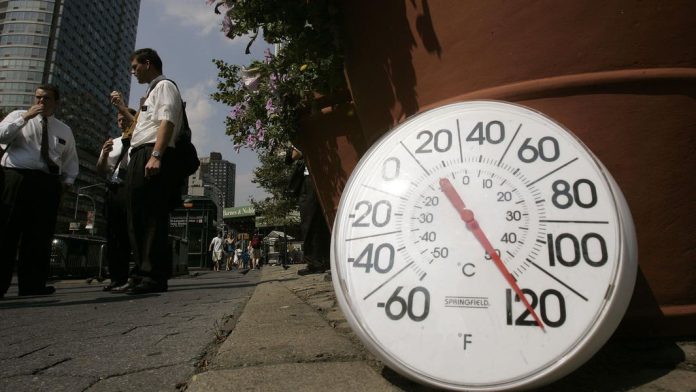Axios — The hottest temperatures to hit the U.S. this year were sweeping across California and the Southwest into Thursday — and the “dangerous” heat’s expected to bring record temperatures to much of the region before expanding eastwards this week.
The big picture: Excessive heat warnings and watches extended from the central valley down through southern California’s deserts, southern Nevada and southern and western Arizona and into Utah, affecting over 29 million early Monday after the heat began building a day earlier.
Widespread temperature records are expected to be tied or broken elsewhere across much of the region.
By the numbers: New temperature records have already been set in Texas, per preliminary National Weather Service data.
The NWS’ Brownsville office reported the city hit a record daily high of 100°F and Harlingen reached 101°F on Wednesday.
Abilene reached a record high of 106°F and San Angelo hit 111°F on Tuesday. “For San Angelo, this does tie the 5th hottest temperatures recorded here,” the local NWS office noted. “The 4 hotter days all occurred in June of last year.”
Phoenix Wednesday morning saw its first 80+ degree Fahrenheit low since October 2023 and expects to tie or break daily warm low records.
Why it matters: Extreme heat ranks as the nation’s top weather-related killer annually, per the NWS. U.S. Border Patrol El Paso, Texas, sector chief Anthony Good noted in a post to X that the extreme heat had killed four migrants trying to cross the border from Mexico over the weekend.
Threat level: There’s a “good chance” the temperature in Las Vegas, Nevada, will top 112°F on Thursday, which the NWS said would be the city’s earliest observed 112°F on record.
Phoenix, Arizona, reached an above-average June temperature high of 104°F on Tuesday, and the NWS warns it could see records set this week. Local officials announced Tuesday evening that Camelback Mountain and key trails would close Wednesday through Friday as a precaution.
“Record warm low temperatures at night will not offer much chance to cool off either,” the NWS said in a forecast discussion Wednesday afternoon.
Driving the news: The heat wave is the result of an expanding high pressure area, or heat dome, that’s been lingering over Mexico and Central America, where it’s repeatedly broken all-time temperature records and exacerbated drought conditions.
What’s next: The heat is forecast to expand northward across the Great Basin and into the interior Pacific Northwest on Friday, with the NWS warning of “highs reaching well up into the 90s.”
Meanwhile, the searing heat that’s gripped southern Texas is forecast to become less intense over the next couple of days.
Context: The link between human-caused climate change and more frequent, intense heat waves is firmly established in scientific literature, per Axios’ senior climate reporter Andrew Freedman.
Studies have warned far more dangerous conditions loom, depending on the pace and extent of greenhouse gas emissions cuts.
Between the lines: Climate Central’s Climate Shift Index, which measures the influence of climate change on daily weather conditions, shows that “over 229 million people across North America will experience extreme heat made at least three times more likely because of human-caused climate change” from June 5-7.
For parts of the southwestern U.S. and Mexico, it’s “at least five times more likely, signifying an exceptional climate change event.”








